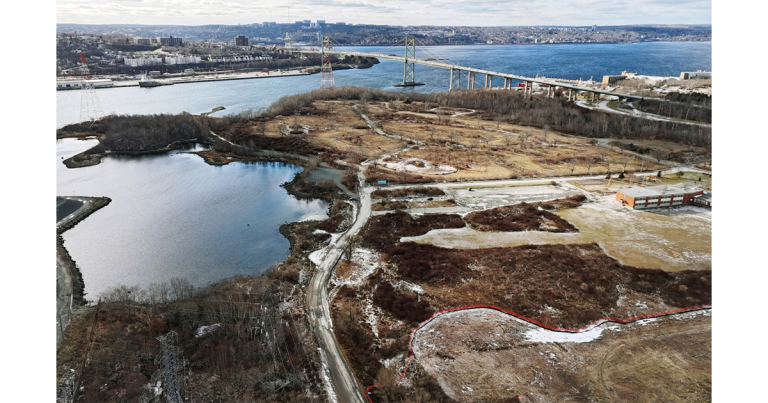Stray Welding Current Damage

May 4, 2020
By Jim Galloway
The call comes in just as you’re sitting down for supper with the family. The shop across town where you had just finished some major electrical service installations the month before is not happy. Their new jib crane is down and production is halted. The guy on the phone is the owner’s son, ‘Junior’, and he’s hopping mad and sounding off about an electrical short and smoke coming out of the wiring. He wants you back there as soon as possible, and as you hang-up the phone, he’s still going on about shoddy electrical work.
About half an hour later as you pull up to the back of the shop, you have a chance to speak to a couple of the employees sitting outside that you met during the installation job the previous month. They’re enjoying some cool evening air and don’t seem to mind the break from work. Their welding helmets and other gear are on the ground beside them. Sure enough, they tell you, there had been smoke coming from the wiring on the crane in their bay, followed by a big arc flash. That’s when everything shut down.
As you’re doing an initial inspection of the wiring in the shop, Junior sees you and starts flapping his gums again. Tuning him out, you can already start to see the problem.
The secondary arc welding circuit
An arc welding machine can provide hundreds of amps of secondary welding current. By design, it is critical that this current be contained in an isolated closed loop circuit using heavy insulated copper cabling connecting the electrode terminal to the welding electrode, and then returning the current from the workpiece to the work terminal. Although there are many variations in the welding current types (e.g. DC-electrode positive, DC-electrode negative, AC, pulsed-current, etc.), in all cases it is critical that the location of the return lead, or workpiece lead, be attached as close as feasible to the welding arc using a return current clamp. (See Figure 1.)

Stray welding current
If given an opportunity, welding current will deviate from the intended secondary welding pathway and satisfy the circuit by returning to the work terminal however it can. Sometimes the current will find multiple parallel pathways; other times there might only be one incorrect route. When this occurs, we call it stray welding current (SWC) and it’s surprisingly easy to establish. One simple error by a welder can cause SWC; other times it’s caused by a problem with the equipment such as damaged insulation on a welding cable.
In the case of the electrical fault in the jib crane that you are investigating, you can see that one of the welders has forgotten to install the return current clamp on the work and has left it coiled up on the side of the welding machine. The jib crane is still supporting a big steel component that they were welding. Welding current has returned to the machine’s work terminal through a convoluted, but very suitable pathway (from its perspective).
The welding current left the electrode terminal, went through the electrode lead, created the weld, went through the part being welded, through the hook (supporting one of the parts), through the alloy hoist chain, through the hoist’s drum and bearings, into the crane’s control wiring, into the electrically grounded crane structure, into the electrical network, through the EMT and enclosures, into the protective earth wire to the welding machine, through the welding machine’s chassis, into the return current clamp touching the chassis, through the workpiece lead and finally back into the work terminal. (See Figure 2.)
Some of the control wiring on the crane is visibly burnt out as it acted as a fuse for the high-amperage welding process.

Preventing stray welding current
This scenario describes one of many possibilities for SWC. Often welders will take short-cuts and locate the cable and clamp that they incorrectly call ‘ground’ at the closest convenient spot on a building’s structure. Other times a welding cable will be damaged and in electrical contact with the structure in unexpected locations. Still, in other cases there can be a minor internal fault in a welding wire-feeder, which will create SWC. This can lead to many problems in the electrical system and machinery since SWC can travel through many preferred paths, and this often includes copper wiring, which has a much lower resistance than steel components.
If welders are always diligent about making certain that welding cables are properly sized, the insulation on them is sound and that the return current clamp is placed as close as feasible to the point of welding, most cases of SWC would be solved. Making everyone aware of the proper terminology and the intended secondary welding circuit is a first step. The workpiece lead and the return current clamp are not ‘ground’ and they have a very specific purpose in the welding operation.
Conestoga College in Cambridge, Ontario recently published videos from a project sponsored by EnerDynamic Systems Inc. of Brantford, Ontario where SWC was demonstrated. These three videos are available on the college’s YouTube channel (just search “stray welding current”). In the project, a prototype called a stray current interrupter device (SCID) was developed for welding applications that can detect and arrest SWC.

Bad news for Junior
Junior has just learned from you that there is some serious damage to the crane, and that you will have to perform a complete inspection of the electrical circuits involved in the incident. Insulation resistance tests will be required and the power cord to the welder will have to be replaced. The jib crane will have to be inspected and serviced by specialists. This incident not only damaged the crane’s wiring (which will have to be replaced), but the welding current also caused arcing and overheating on the hook, the alloy chain, and the hoist drum and bearings. Replacing the whole electric hoist might be the only practical solution for this damage.
It seems that the only good news in this story is that nobody was injured. There have been cases like this in Ontario where SWC damaged the electrical circuits and workers have been electrocuted as a result. As you try to tell Junior this, he ignores you. He’s already storming out to the rear of the building to yell at the welders.
Video links
https://www.youtube.com/watch?v=80ehl2nDXUk
https://www.youtube.com/watch?v=kIVH5V9ntrY
https://www.youtube.com/watch?v=t9SXEAGLBCs
Jim Galloway, B.A.Sc., C.E.T., R.S.E, is a Professor of Welding Engineering Technology at Conestoga College in Cambridge, Ontario. He also volunteers as a technical member on several Canadian Standards Association committees, including CSA W117.2 – Welding Safety and CSA C232(CSC26) – Electric Welding Equipment.
This article was first published in the fall 2019 issue of the Ontario Electrical League’s Dialogue; https://online.flippingbook.com/view/186477/
Photo by Jonathan Chen on Unsplash

















